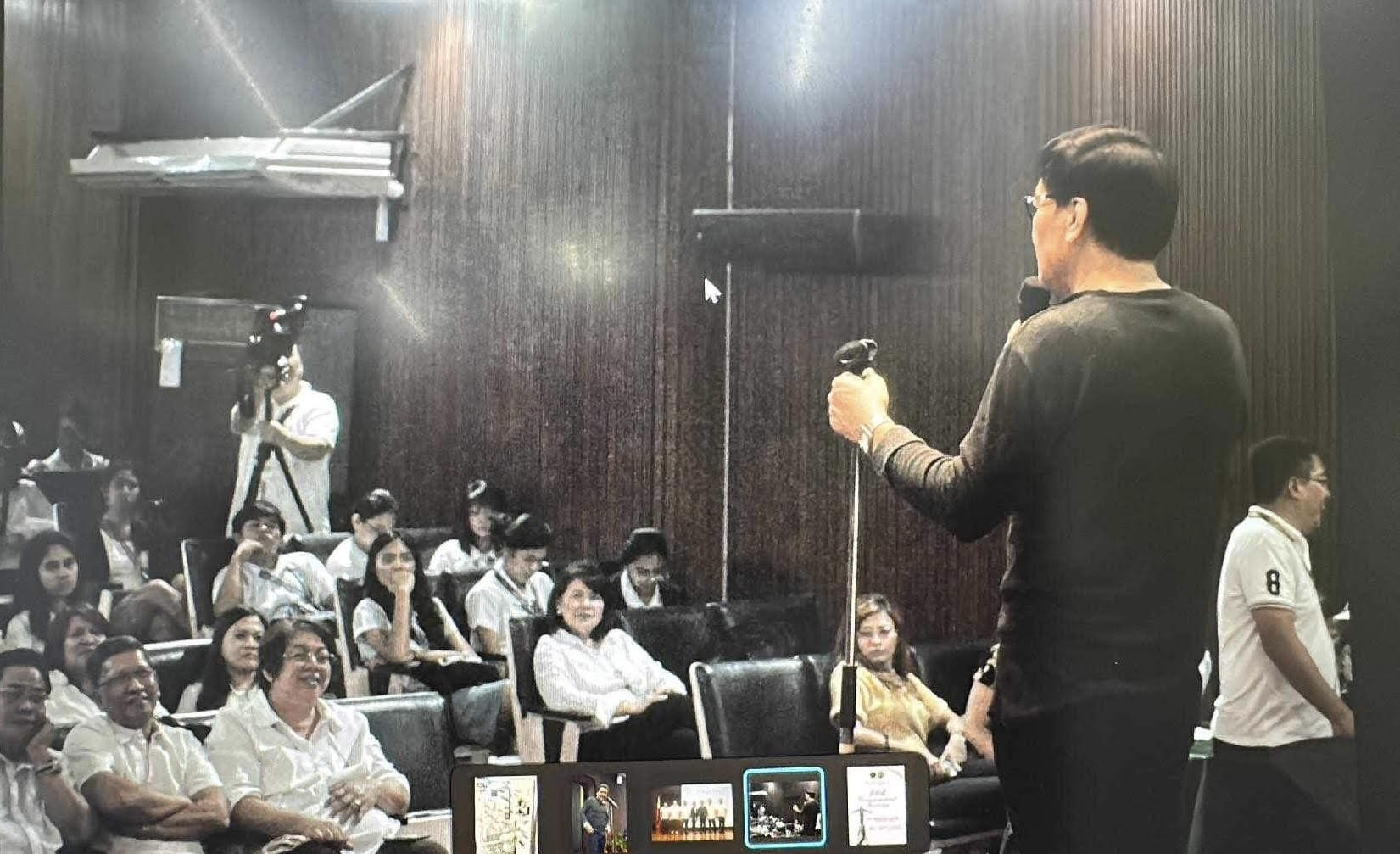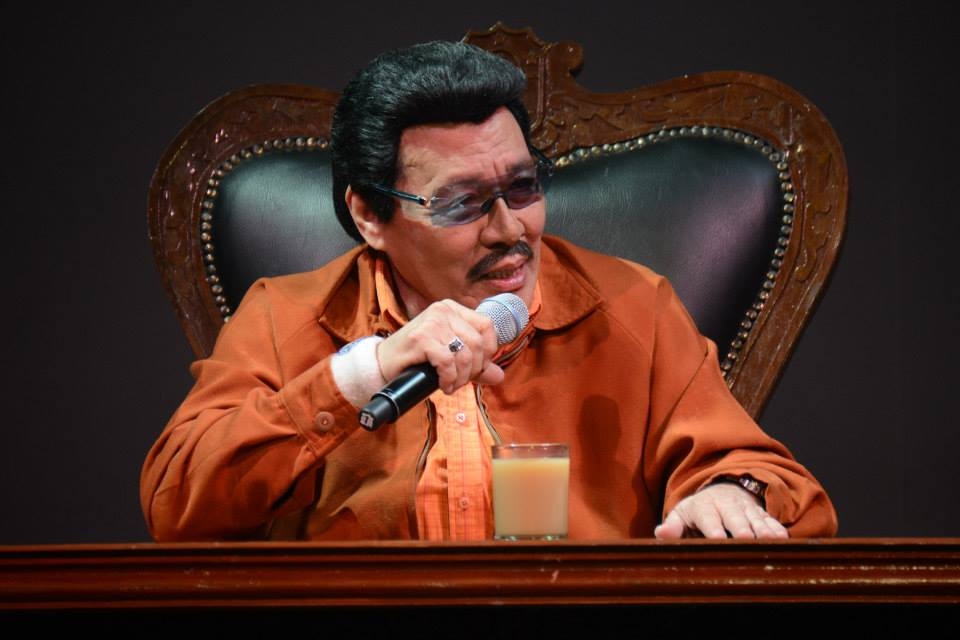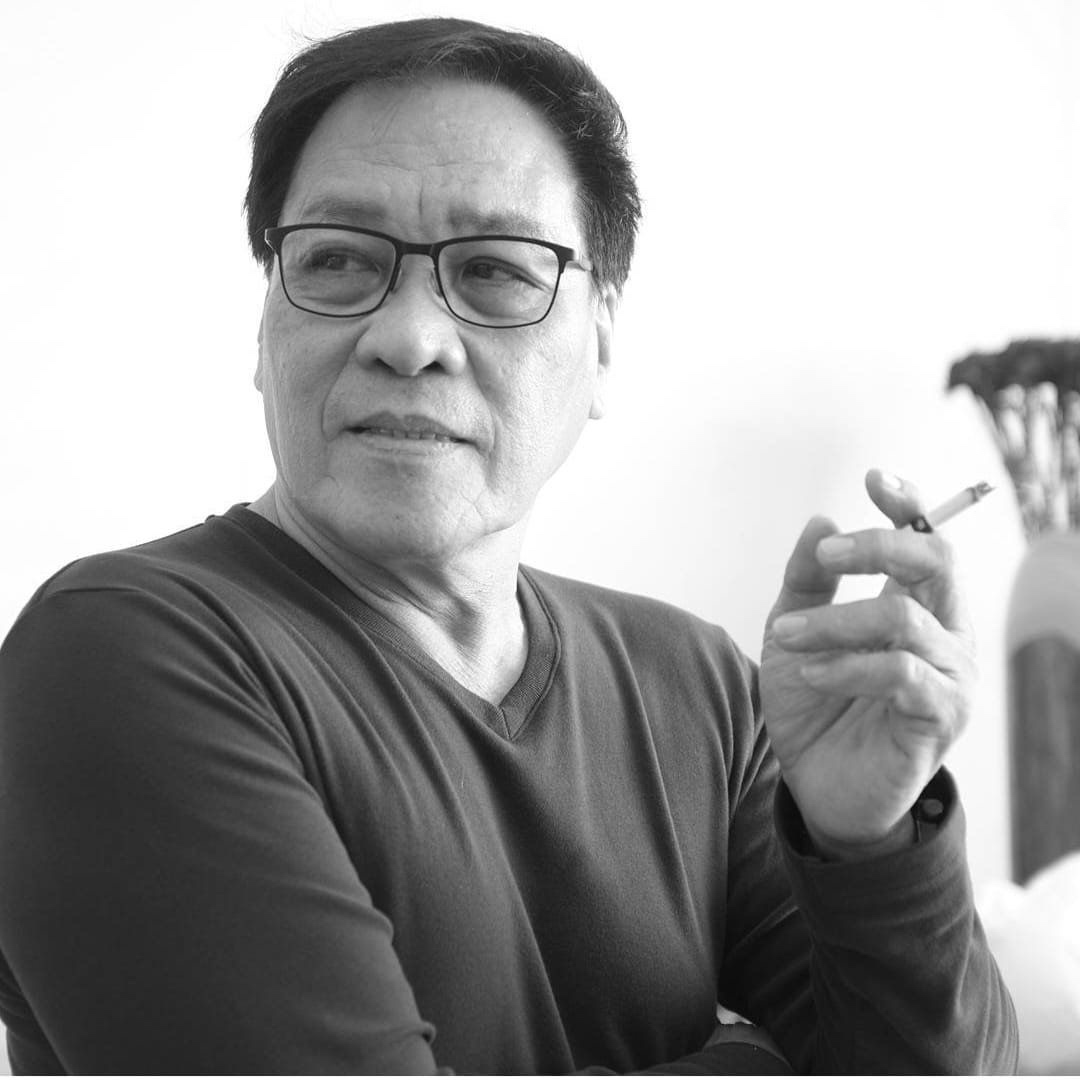Willie Nepomuceno always made sure he brought everyone some fun while he was at it
I read the news on my feed this morning while I was deciding what to cook for breakfast: Filipino satirist Willie Nepomuceno dead at 75.
Oh no, I thought to myself, and just five days after Tony Bennett, too.
Tony Bennett was one of his acts and I'd seen him do plenty and convincingly over the years—on TV, on stage, even in a movie.
The last time I saw him was at the Pamantasan ng Lungsod ng Maynila, where I worked briefly as public affairs head. He was just getting his "sea legs" back after being sidelined by a stroke for close to two years, and the PLM's Justo Albert Auditorium was where he chose to stage his comeback of sorts with the students and faculty as test audience.
Before he stepped out from the wings, I asked if we could squeeze in a short interview. I also thanked him for accepting our invitation to speak on the art of impersonation. He apologized for a bit of a slur in his speech and a slight weakness in his gait, explaining that he was still in therapy.
In his tight black jeans and slim fit long-sleeved black top, he looked the part of a French mime in stock images—the perfect "costume" for what he was about to regale us with.

The things I asked him in our brief interview, he discussed at length with the Justo Albert crowd.
Which one is he, really? Satirist, impersonator, or mimic? Here's what I understood from his explanation of the distinction between those terms.
He is an amalgamation. a complete impressionist in that he is not just someone who does voice mimicry or copies the speech of famous people by exaggerating their accents, the way they dress, or their singing style—although he admits he began there but started “diversifying” when he got bored with what he thought everybody else was already doing.
To set himself apart, he took everything to the next level and did voice, body movements, physical looks, and mannerisms of characters he impersonates.

How did it all start for him?
He began developing his art of impersonation as a young boy when his parents, both inclined to the arts, would make him perform for relatives by imitating a funny aunt or eccentric uncle.
He always got vigorous applause for these performances and he found he liked the sound of an appreciative crowd.
So gradually, he started honing the art—adding bits and pieces here and there as he grew up. He would observe people and would imitate even sounds (a siren, for instance) and musical instruments. As a college student at UP Diliman, he would jolt rowdy classmates to attention by mimicking his teachers. He was an activist, too, and did street theater, political satire, skits, and speeches that ridiculed or poked fun at the establishment, something that the activist in the artist would carry with him through the years.
For those who want to delve into the art form for a living, Willie Nep only had a handful of tips to give: Start with what you have, be a keen observer, be true to your art, and enjoy what you’re doing—otherwise, it becomes a job. A chore. A bore.
Willie Nep explains his choice of art form this way: "My audience laughed when I poked fun at political officials, at the establishment, because I am able to verbalize resentments they might have and get away with it. It’s a form of release for them, passed off as a comedy routine by me."
For Willie, it is also a chance to pursue his advocacy on the sly, to serve as the means for those most vulnerable in society to have their voices heard on issues that are important to them, safeguard their rights in a way that their targets can’t really be piqued about else they be labeled a bad sport or pikon.
More importantly for Willie, it made the butt of his jokes think and change their ways, or at least tone it down or be more disimulado about it.
Willie Nep perfected his art on the job by going as far as to dig into the background of characters he impersonates, finding out why comedian Dolphy walked with a stoop, for instance, or why the late former president Ferdinand Marcos put on a different persona depending on the kind of crowd he was addressing. What makes them tick or what ticks them off. This way, he is able to play “footsie” with or dance around the subjects of his skits and acts without the risk of being thrown in jail or roughed up by their bodyguards.
He became so good at it that, once, while rushing to a gig at a television station and entering the premises already in full makeup and costume, he would alternately have the gate guards and company officers saluting him (when he came in as General Fidel Ramos) and shaking his hand and addressing him as Mr. President (when he came in as President Estrada at a function where the real president was also a guest).

He was a myna bird. A parrot. A complete performer.
In the question-and-answer portion that followed his performance, which included him doing some of his more popular impersonations live and showing the rest in AVP form, a student asked: How to be you po?
Willie Nep’s advice: Start with what you already have and work very hard to perfect that.
For Willie, he started with his looks—"Chinito na ako, so ang ginaya ko, 'yung mga medyo kahawig ko"—and that included a slew of presidents (owing to his activist and political-satire beginnings): Marcos, Joseph Estrada, Fidel Ramos, Noynoy Aquino, and more recently, Rodrigo Duterte. Or "mga kaboses niya"—Frank Sinatra, Paul Anka, Stevie Wonder, Sammy Davis, Jr., Tony Bennett, Dolphy, Hitler, Fidel Castro, Muhammad Ali, Saddam Hussein, Gringo Honasan, Nur Misuari, German Moreno, Manny Pacquiao, and Panfilo Lacson.
He was so good at his art form that Marcos, during his term, would invite him to rallies to draw the crowds. Singer Darius Razon—whose hit at the time he would do in sketches—actually waited for him backstage once to give him his new recording to include in his act.
He liked to say he was drawn to the arts by a father who loved to dance and a mother who played the piano. Willie had dreams of being an actor (he acted in at least three movies between 1974 and 2013) or a singer (he could not sing in his own voice for long because he kept slipping into character), so none of those careers really took off.
He also took the odd summer job or two working as an illustrator and writing or editing textbooks (he was at one juncture, managing editor of the Philippine Collegian), but he was at his happiest when playing to a crowd and turning around to slip on a half mask, wig or mustache, and facing an audience with someone else’s voice, someone else’s face.
It was almost as if he had multiple personality disorders.

But for those who want to delve into the art form for a living, the Maestro only had a handful of tips to give: Start with what you have, be a keen observer, be true to your art, and enjoy what you’re doing—otherwise, it becomes a job. A chore. A bore.
I know for a fact that Willie Nep went on from here to do a concert with Nonoy Zuñiga in 2018, and I guess he kept on working till the end, always making sure he brought us and himself some fun while he was at it.
And you know what they say: It's not really work when you're having fun.


